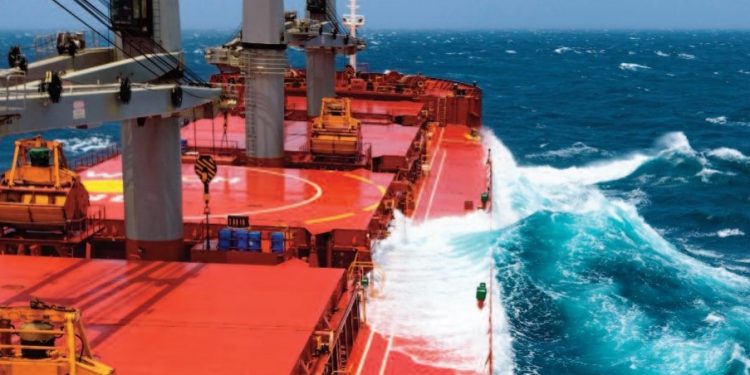In its series of hatch covers incidents, the Swedish Club provides lessons learned from an incident where water had entered cargo hold 1 of a bulker, causing wet damage.
The incident
A bulk carrier had a full cargo of zinc concentrate on board and was sailing from the west coast to the east coast of South America. When the vessel passed Cape Horn it experienced heavy weather of Beaufort scale 9 with green sea covering the cargo hold covers 1, 2 and 3. This continued for four days as the vessel battled the waves. The vessel had no weather routeing.
When the weather had calmed down the Master asked the Chief Officer to inspect the cargo holds. The Chief Officer found that water had entered cargo hold 1 and caused wet damage. No water had leaked into the other holds. The Chief Officer also inspected the hatch coaming and the hatch cover for hold 1, and found a crack on the hatch coaming. The drain pipes for the nonreturn drain valves were also full of debris and cargo.
Probable cause
During discharge the surveyor found that the sounding pipes for the cargo bilges were also blocked by debris. When the vessel was alongside and the cargo hatch covers were removed, puddles could be seen in hold 1. It took several extra days to get the wet cargo off the vessel and most of the cargo was refused by the buyer.
Lessons learned
- The sounding pipes should be clear of any debris or cargo, as they are important for taking soundings before loading and during the voyage.
- It is important to be aware that zinc concentrate may liquefy if shipped with a moisture content in excess of its transportable moisture limit (TML) as per the IMSBC code. Puddles of water will obviously exceed the TML.
- It should be a PMS job to check that the drainpipes and drain valves are not clogged and that the float (ball inside) moves freely.
- Hatch covers, and coaming steel structures are heavily loaded elements. Their condition has a direct effect on the load carrying capacity and the safety of the vessel. The steel construction should always be inspected after an unusual loading case, and there should also be regular checks as per the PMS.
- When repairs are carried out, only steel approved by the classification society should be used. High tensile steel is commonly used for cargo hatches and coamings.
- The classification society should be contacted before making any structural steel repairs.
- Weather routeing should be considered as it provides the vessel with the option of avoiding heavy weather, but also ensures that vessels are provided with a new and updated ETA to the discharge port. This helps the crew on board the vessel, shoreside personnel, and cargo owners, to plan accordingly






























































